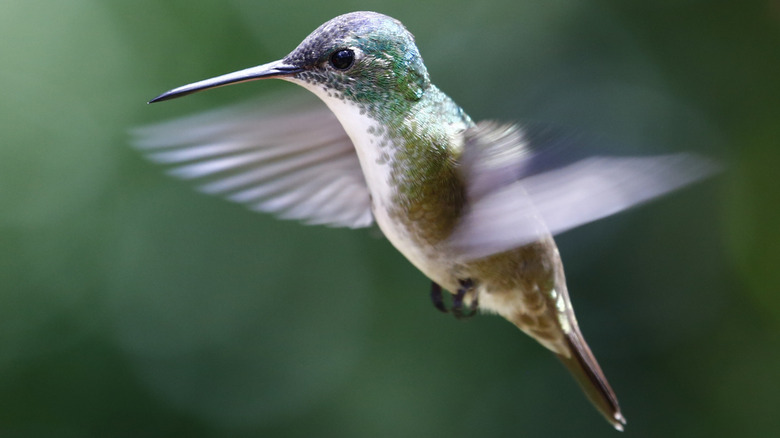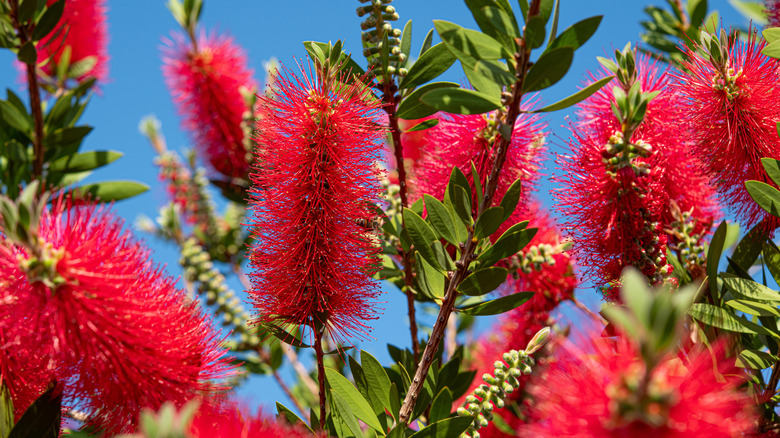Spruce Up Your Garden With A Spiky Plant That Hummingbirds Love
Looking to add a unique, eye-catching plant to your garden that attracts hummingbirds to your yard? The bottlebrush (Callistemon spp. or Melaleuca spp.) might be just what you need. With its vibrant red, spiky blossoms that resemble the bristles, this beautiful plant is a magnet for pollinators, especially hummingbirds. Bottlebrush plants not only add bold texture and color, but also require minimal maintenance once established. Perfect for a sunny spot in the garden, this plant can grow into a small tree or remain a shrub, making it versatile for various garden styles. But there are a few things you should know before you start.
First things first: there are two main types of bottlebrushes you should differentiate between — the weeping bottlebrush and the upright red bottlebrush, which is sometimes called the crimson bottlebrush. You can spot the difference by looking at their branches. The weeping variety's branches droop down like a weeping tree, while the red bottlebrush grows upright. In some parts of the country, this distinction is more than aesthetic. For example, in South Florida, the weeping bottlebrush is classified as an invasive species and should be avoided.
If you're in an area where a weeping bottlebrush is safe to plant — or if you're opting for a red bottlebrush instead — get ready to attract hummingbirds! With excellent eyesight, hummingbirds are particularly drawn to red flowers, so either bottlebrush will bring these colorful birds flocking to your yard. Bees also love bottlebrush blooms for their nectar.
How to grow a bottlebrush
To plant a new bottlebrush in your garden, dig a hole as deep as the root ball and up to three times as wide. Loosen the roots with your fingers before placing the plant in the ground, then add soil to fill the hole. If you have some, add a layer of mulch on top to help keep moisture in.
During the first year, keep the plant moist consistently, allowing the soil to dry out between waterings to avoid sogginess and rot. Once the roots are established, the bottlebrush can handle drought and dry conditions, so you'll only need to water it during droughts or if the leaves begin to wilt.
Keep in mind that the bottlebrush is originally from Australia, so it loves full sun and warm temperatures. The weeping bottlebrush grows in zones 9 through 11, while the red bottlebrush grows in zones 8 through 11. If you live in a colder region, plant it in a large pot and bring it indoors for the winter once temperatures dip to around 50 degrees Fahrenheit. With the right care, your bottlebrush will bloom beautifully each year in late spring and summer. Don't forget to prune your bottlebrush as well!

